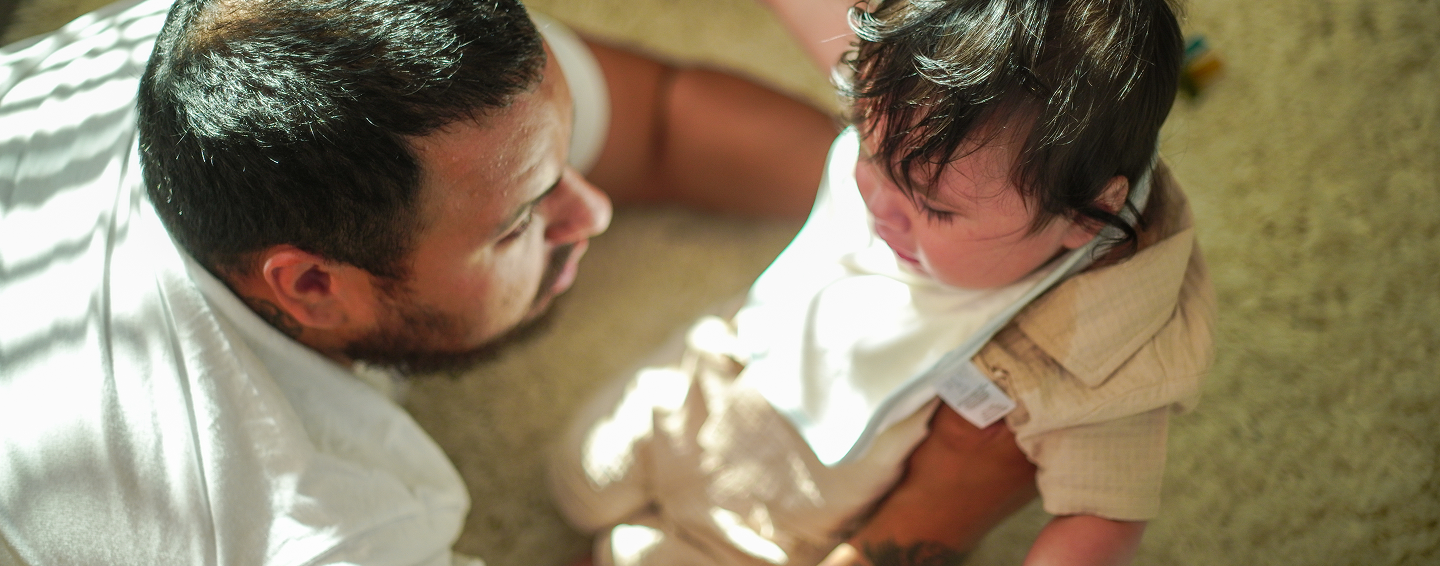Why Summer Safety Matters for Your Newborn
Newborn summer essentials are critical for keeping your baby safe and comfortable during hot weather. Research shows that babies under 6 months should be kept completely out of direct sunlight, as just one instance of sunburn increases skin cancer risk by 50%. Their delicate skin is 30% thinner than adult skin, making proper protection vital.
Essential newborn summer items include:
- Lightweight, breathable clothing - Muslin swaddles and organic cotton onesies
- Sun protection gear - Wide-brim hats and UPF 50+ clothing
- Cooling accessories - Portable fans and stroller shades
- Sleep essentials - 0.2-0.5 TOG sleep bags for warm nurseries
- Travel gear - Pop-up sun tents and insulated bottle bags
- Skin care basics - Mineral sunscreen (6+ months) and gentle cleansers
The key is using physical barriers like shade and breathable fabrics rather than relying on sunscreen alone. Babies who get too hot face increased SIDS risk, so maintaining room temperatures between 60-68°F is crucial for safe sleep.
Summer parenting brings unique challenges - from choosing the right TOG rating for sleep bags to timing outdoor activities around peak UV hours. Getting these basics right means more comfortable days and better sleep for everyone.
I'm Gary Harutyunyan, and as a new father who struggled with my own baby's sleep challenges, I understand how overwhelming it can feel to steer newborn summer essentials while managing sleep deprivation. My experience creating sleep solutions for families has shown me that the right gear and knowledge can transform those difficult early months into more manageable experiences.
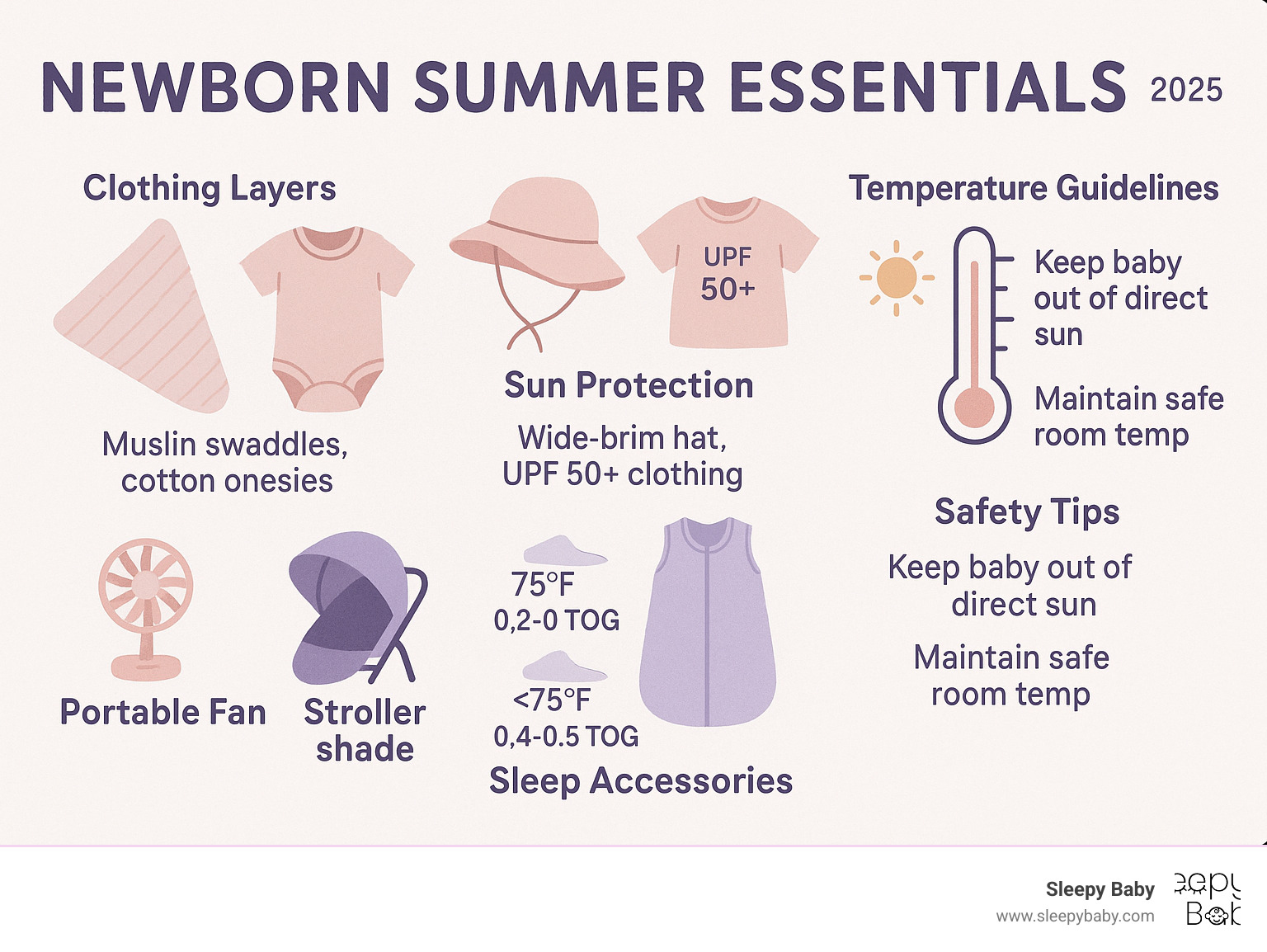
Newborn Summer Essentials: Dressing to Beat the Heat
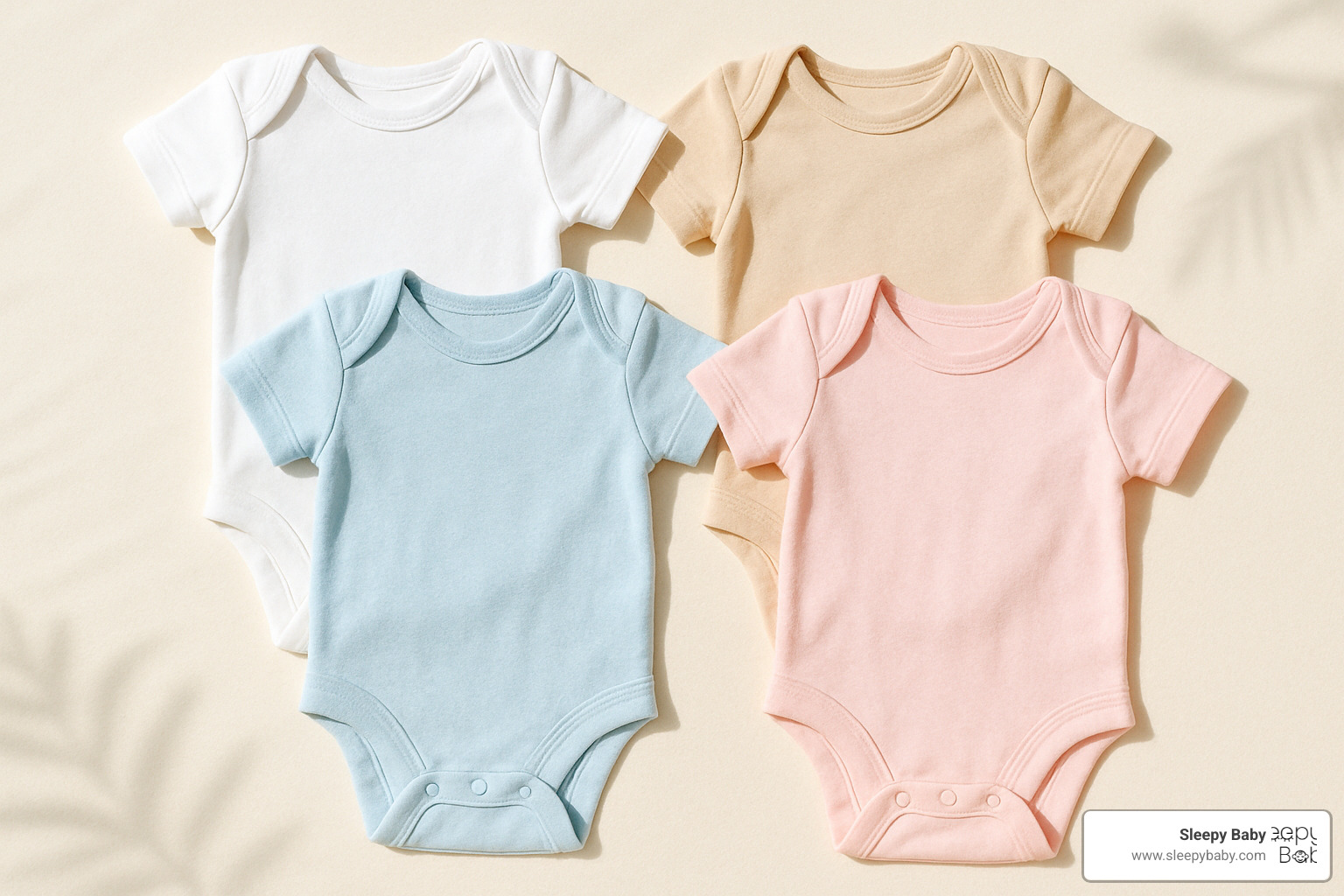
When the temperature soars, dressing your newborn becomes a delicate balance. You want them cool and comfortable, but not so bare that they lose that cozy feeling they crave. The secret lies in choosing the right fabrics and mastering strategic layering.
Think of summer dressing as building a breathable cocoon. Your newborn summer essentials should work together like a well-orchestrated team - each piece serving a purpose while allowing maximum airflow around your baby's delicate skin.
Best Fabrics & Layering Tricks for Newborn Summer Essentials
Muslin is your summer superhero fabric. This lightweight champion breathes like nothing else, making it perfect for swaddles that won't trap heat. A muslin swaddle can transform from a sleep wrap to an instant stroller shade in seconds - versatility that saves the day.
Organic cotton bodysuits form the foundation of any summer wardrobe. They're gentle enough for sensitive skin while letting air flow freely. When shopping, look for pointelle knit options - those tiny decorative holes aren't just pretty, they're functional ventilation systems built into the fabric.
Bamboo viscose deserves recognition for its moisture-wicking properties. This fabric gets softer with each wash and naturally helps regulate your baby's temperature. It's like having personal climate control woven into their clothes.
When comparing muslin vs jersey cotton, muslin wins for breathability during hot weather. Jersey offers more stretch and durability, but in summer heat, breathability trumps everything else.
Smart layering starts with a lightweight bodysuit as your base layer. Add a muslin swaddle that can be removed as temperatures rise. Babies' legs are natural cooling zones - keeping them uncovered when possible helps regulate body temperature. For the hottest days, sleeveless options become essential.
The key is thinking removable layers rather than heavy single pieces. This way, you can adjust throughout the day as temperatures change or as you move between air-conditioned spaces and outdoor heat.
Sleepwear Guide by Nursery Temperature
Sleep safety becomes even more critical during summer months. Research shows that overheating increases SIDS risk, making proper sleep temperature non-negotiable for your baby's safety.
TOG ratings (Thermal Overall Grade) become your navigation system for summer sleep. For warm nurseries, you'll want 0.2-0.5 TOG swaddles or sleep sacks when room temperature sits between 20-24°C (68-75°F). These ultra-light options provide coverage without trapping dangerous heat.
Sleeveless sleep sacks are game-changers for the warmest nights. They give your baby that secure feeling while keeping their arms free to help regulate body temperature naturally.
Here's your temperature guide for safe summer sleep:
| Room Temperature | TOG Rating | What Baby Wears |
|---|---|---|
| 16-20°C (60-68°F) | 1.0 TOG | Long-sleeve bodysuit + sleep bag |
| 20-24°C (68-75°F) | 0.5 TOG | Short-sleeve bodysuit + sleep bag |
| 24°C+ (75°F+) | 0.2 TOG | Just diaper + sleep bag |
Don't be fooled by outdoor temperatures - your air-conditioned nursery might be cooler than you think. Always check the actual room temperature rather than guessing. A simple room thermometer becomes one of your most valuable newborn summer essentials.
When temperatures exceed 24°C (75°F), your baby might need just a diaper under their sleep bag. This might feel strange at first, but babies regulate temperature differently than adults - less is often more during summer sleep.
Safe Sun Protection Strategies
When it comes to protecting your newborn from the sun, think of yourself as their personal bodyguard. The FDA and American Academy of Pediatrics are clear: babies under 6 months should avoid sunscreen entirely. Instead, we're going full physical barrier mode - and it's more effective anyway.
Your baby's skin is incredibly delicate, about 30% thinner than yours. That means what feels like a pleasant warm day to you could spell trouble for their sensitive skin. The good news? Creating a sun-safe environment is totally doable with the right approach.
Physical Barriers First
Wide-brim hats are your secret weapon and deserve a permanent spot in your newborn summer essentials kit. Look for hats with UPF 50+ protection that create shadow over your baby's face, ears, and neck. Those tie-under-chin styles might look old-fashioned, but they're genius - no more chasing after hats that get yanked off.
Stroller shades and pram canopies turn your stroller into a mobile safe zone. Air-permeable mesh covers can block 80-99% of UV rays while still letting air flow through. This dual protection reduces both sunburn and overheating risk - a win-win that every parent appreciates.
Pop-up sun tents are like having a personal shade oasis wherever you go. Whether you're at the beach, park, or just in your backyard, these portable shelters with UPF 50+ fabric block over 99% of harmful rays. They set up in seconds and give you peace of mind.
Don't forget about UV car shades - they're often overlooked but important. Position them on rear windows (never block the driver's view!) to protect your little one during car rides. Retractable options work brilliantly because you can adjust them as the sun moves.
Building a shade-seeking routine becomes second nature once you get the hang of it. Plan outdoor moments for early morning or late afternoon when the sun isn't so intense. Those peak UV hours between 10 AM and 4 PM? That's perfect timing for indoor play, naps, or air-conditioned errands.
Sunscreen Rules After 6 Months — A Newborn Summer Essentials FAQ
Once your baby hits the 6-month mark, scientific research on baby sunscreen shows that mineral-based sunscreens become both safe and necessary for complete protection.
Broad-spectrum zinc oxide or titanium dioxide sunscreens are your safest bet because they work like tiny mirrors, sitting on top of the skin and reflecting UV rays away. Unlike chemical sunscreens that absorb into the skin, these mineral filters are gentler and less likely to cause irritation.
Always do a patch test before applying sunscreen all over your baby. Apply a small dab to their inner wrist and wait 24 hours to see how their skin reacts. It's a small step that can save you from a very cranky, uncomfortable baby later.
Reapplication every 2 hours is non-negotiable, especially after water play or if your baby gets sweaty. Stick formulations work wonderfully for faces because they're less likely to run into those precious eyes and cause tears.
Latest research on infant sun safety reveals something sobering: five instances of sunburn in childhood increase skin cancer risk by 80%. That's why getting sun protection right from the start matters so much for your baby's long-term health.
On-the-Go Gear & Cool Travel Tips
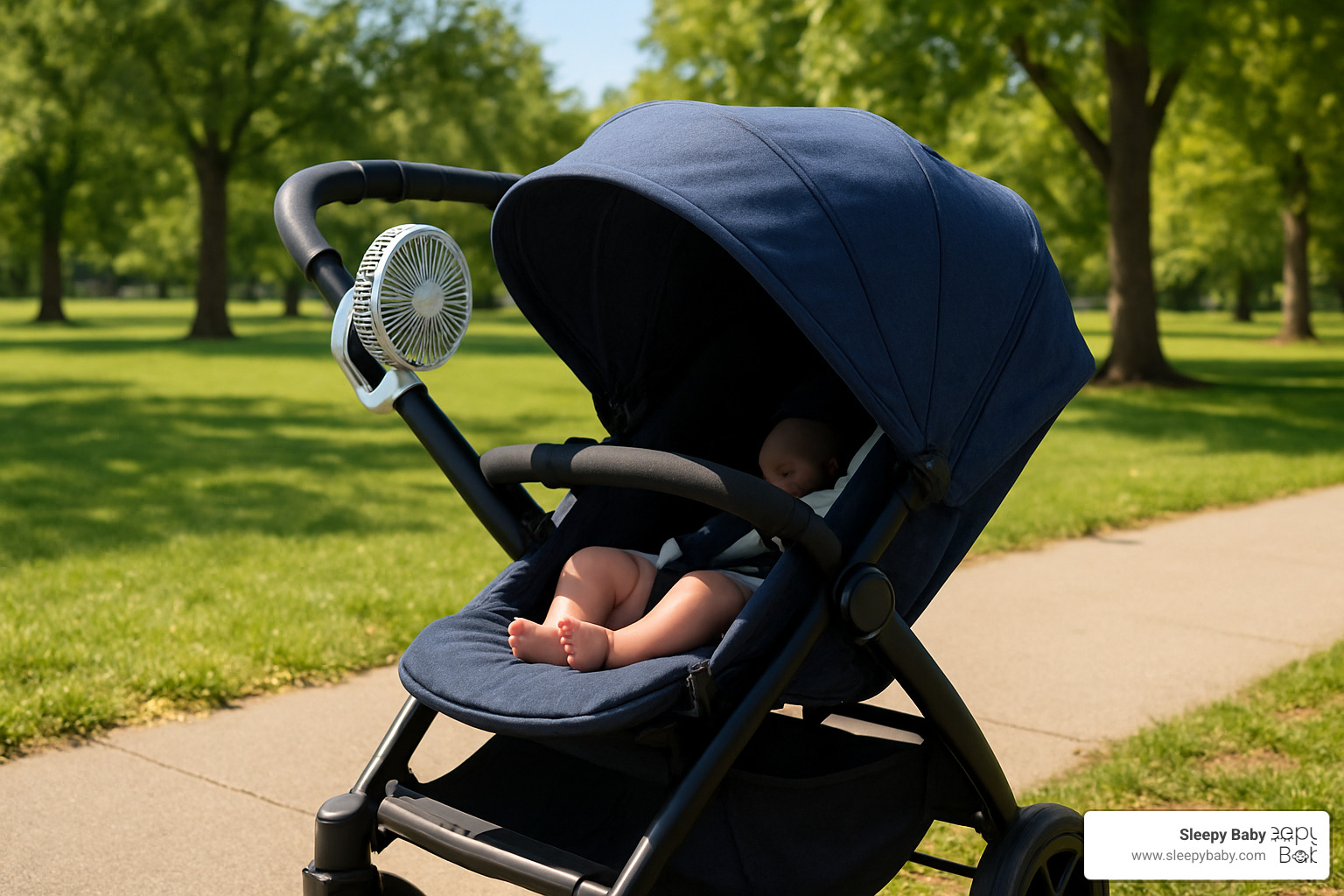
Summer trips with your newborn don't have to mean staying cooped up indoors. With the right gear and a few clever tricks, you can keep your little one comfortable while maintaining those precious sleep routines that took so long to establish.
The secret is thinking ahead. Summer outings require different planning than other seasons - you're not just packing for hunger and diaper changes, but also for heat, sun exposure, and keeping everyone cool when you're away from air conditioning.
Must-Pack Newborn Summer Essentials Diaper Bag
Your summer diaper bag becomes your mobile command center for beating the heat. Wet/dry bags are lifesavers - they keep sweaty clothes separate from clean items and prevent that awful soggy-diaper-bag situation. They're also perfect for storing damp swimwear after those first adorable water play sessions.
Swim diapers might seem premature for a newborn, but they're essential even for babies who aren't actively swimming. Regular diapers turn into water balloons when wet, while swim diapers contain messes without the bulk. You'll thank yourself for having these on hand.
Quick-dry towels are game-changers for summer outings. These microfiber options absorb moisture just as well as regular towels but pack smaller and dry faster. No more carrying around a damp, heavy towel that makes everything else in your bag feel clammy.
Always pack spare rompers in breathable fabrics - at least one in your current size plus one size up. Babies seem to have a sixth sense for blowouts right when you're farthest from home, and summer heat makes everyone sweatier and messier.
Your first-aid mini kit needs summer-specific items too. Include gentle cleansing wipes, barrier cream for preventing heat rash, and infant-safe insect repellent for those evening stroller walks.
Road-Trip & Stroller Cooling Hacks
Window-shade placement is more strategic than you might think. Position them to block direct sun without obstructing your view, and remember that retractable options adjust as the sun moves throughout your journey. The sun that's behind you at 2 PM might be blazing through the side window by 4 PM.
Portable fans that clip onto stroller handles provide instant relief and can transform a fussy, overheated baby into a content one. Look for quiet models that won't disturb naps - some parents report 85% less fussiness when using these during hot weather outings. Just remember that fan battery safety is crucial. Ensure they're securely attached and check battery levels regularly. Pack backup batteries for longer trips.
Developing a park-in-shade habit can make the difference between a comfortable car and a dangerous hot box. Even a few minutes in direct sun can heat car interiors to dangerous levels. Circle parking lots looking for that perfect tree-shaded spot - it's worth every extra minute.
The combination of insulated bottle bags and ice packs keeps formula or pumped milk at safe temperatures during longer outings. Lightweight carriers with breathable mesh panels allow for hands-free mobility while keeping baby close and comfortable.
More info about travel sleep aids can help you maintain sleep routines even when you're out and about during summer trips. Because a well-rested baby makes every outing more enjoyable for everyone.
Cool & Safe Sleep Solutions in Hot Weather
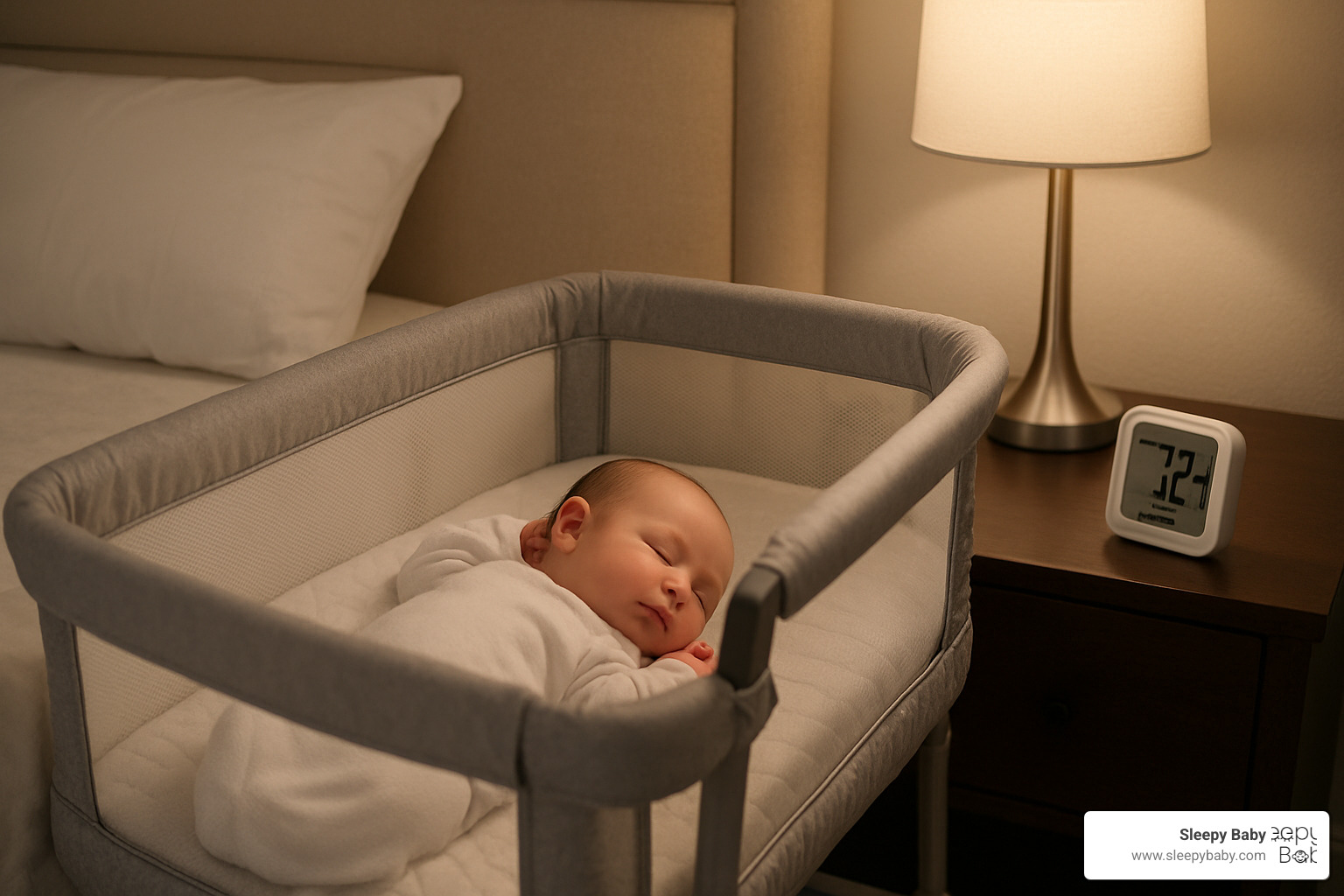
Summer nights can turn your baby's peaceful sleep into a sweaty, restless struggle. The challenge isn't just keeping them cool - it's creating a safe sleep environment that maintains the right temperature without introducing new risks.
Room temperature should stay between 16-20°C (60-68°F) for safe sleep, even when it's blazing hot outside. This might mean running your air conditioning more than usual, but it's crucial for reducing SIDS risk. Many parents worry about the cost, but think of it as an essential newborn summer essential rather than a luxury.
Setting Up the Summer Sleep Environment
Digital room thermometers become your best friend during summer months. Check the temperature multiple times throughout the day, especially before bedtime and during those early morning hours when AC units work hardest. Many newer thermometers also track humidity, which matters more than you might think - high humidity makes babies feel hotter even at the right temperature.
Air circulation works wonders without the direct cooling that can be dangerous for babies. Position fans to create gentle cross-ventilation rather than pointing them directly at your little one. The goal is moving air around the room, not creating a wind tunnel over the crib.
Blackout curtains do double duty in summer - they block sleep-disrupting light and help keep rooms cooler during the day. This means your AC doesn't have to work as hard, and your baby's room stays more comfortable for those crucial daytime naps.
White noise devices can mask the sounds of air conditioners cycling on and off, which often wake babies just as they're settling into deeper sleep. The consistent sound helps them stay asleep even when the cooling system kicks in.
Sometimes a slightly damp washcloth on your baby's forehead or wrists can provide quick relief if they seem overheated. But never leave them alone with wet items, and only use this as a temporary measure while you adjust the room temperature.
Portable Naps: Newborn Summer Essentials Away From Home
Getting good naps outside your perfectly climate-controlled nursery requires some creativity. UV-blocking mesh covers transform any stroller into a safe sleep space, blocking up to 99% of harmful rays while allowing crucial airflow. These covers are game-changers for maintaining nap schedules during summer outings.
Breathable travel crib sheets made from muslin or bamboo help regulate temperature in pack-and-plays or travel cribs. Pack extras because summer means more frequent washing - babies sweat more, and you'll want fresh sheets for each sleep session.
Maintaining nap routines becomes even more important when dealing with heat and different environments. Familiar sleep cues help babies settle despite temperature changes or new surroundings. The rhythmic patting and white noise from portable sleep aids can provide that consistent comfort your baby needs, even when you're away from home.
More info about portable sleep solutions shows how you can maintain healthy sleep habits no matter where summer trips take you. The key is having tools that work anywhere - from air-conditioned hotel rooms to breezy beach houses.
Diapering, Skin Care & Hydration Hacks
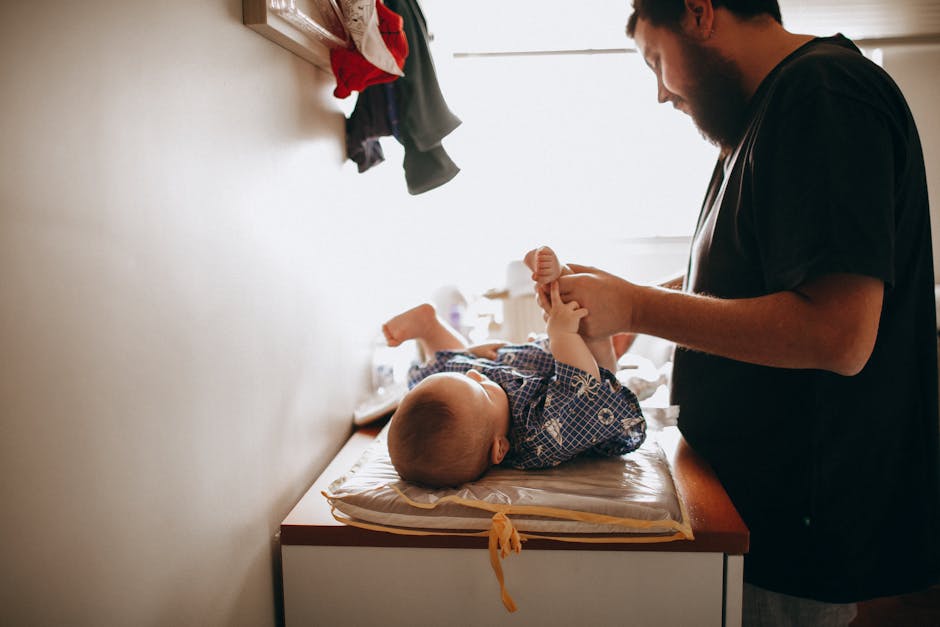
Summer heat creates a perfect storm for diaper rash and skin irritation. Between increased sweating, humid conditions, and more frequent diaper changes, your newborn summer essentials need to include extra skin protection strategies.
The key is getting ahead of problems before they start. Barrier ointments should be applied preventively, not just when you notice redness. Think of them as invisible armor against moisture and heat. I learned this the hard way during my own baby's first summer - waiting until you see irritation means you're already behind.
Frequent diaper changes become even more critical when temperatures rise. Sweat and humidity can turn a normally comfortable diaper into a breeding ground for bacteria. Check diapers every hour during particularly hot days, even if they don't seem full.
Sweat rash prevention starts with keeping skin dry and allowing air circulation when possible. During diaper changes, let your baby's skin air-dry for a few minutes before putting on a fresh diaper. Those few minutes of freedom can prevent hours of discomfort later.
Gentle baby washes matter more in summer when you might be bathing your little one more frequently. Look for fragrance-free, hypoallergenic formulas that clean without stripping away natural protective oils. Over-washing can actually make skin more vulnerable to irritation.
Beat the Heat From the Inside Out
Keeping your newborn properly hydrated during hot weather is absolutely crucial, but it's simpler than many parents think. Breast or formula feeding on demand provides all the hydration your baby needs - no water required for babies under 6 months.
Your baby's body is working overtime to regulate temperature during summer heat, making those extra feeds throughout the day essential. Don't be surprised if your little one wants to nurse or take a bottle more frequently when it's hot. This is completely normal and healthy.
Cooler bags for bottles become lifesavers during summer outings. Formula can spoil quickly in heat, and breast milk loses its beneficial properties when it gets too warm. A good insulated bag maintains safe temperatures for several hours, giving you peace of mind during longer trips.
Frozen breast milk teethers offer double benefits - they provide cooling relief for fussy babies while delivering nutrition. Fill silicone feeders with frozen breast milk or formula for a safe, soothing treat that helps regulate body temperature.
For older babies who've started drinking water, insulated sippy cups keep drinks cool and refreshing. However, newborns get all their hydration needs met through breast milk or formula alone.
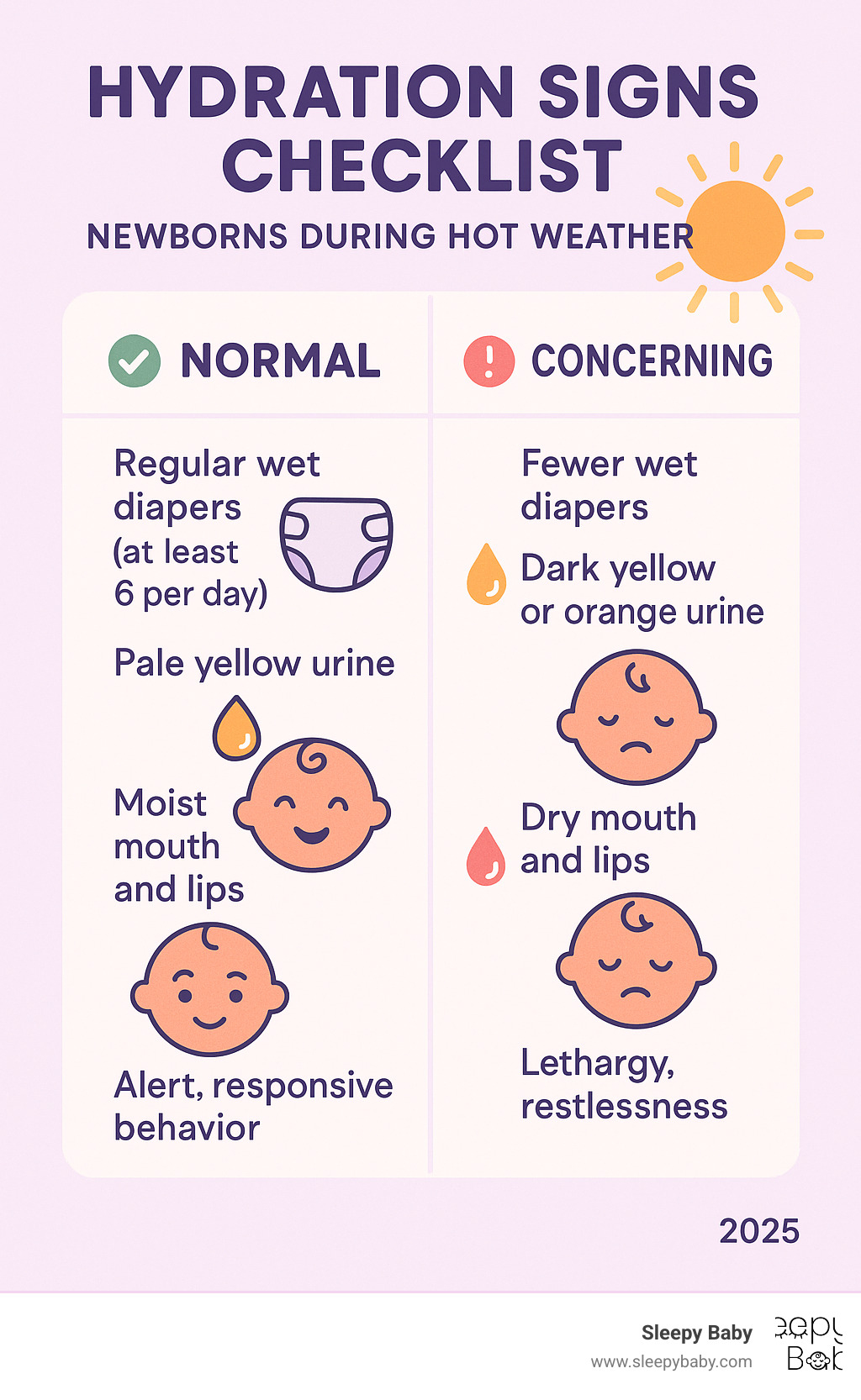
Recognizing proper hydration becomes especially important during summer months. Regular wet diapers (at least 6 per day) remain your best indicator that everything is working as it should. Pale yellow urine shows good hydration, while dark yellow or orange signals concern.
Watch for moist mouth and lips and alert, responsive behavior. A well-hydrated baby should seem comfortable and engaged, not lethargic or overly fussy. Trust your instincts - if something feels off, contact your pediatrician immediately.
Summer skin care doesn't have to be complicated, but it does require more attention to detail. With the right approach and products, you can keep your baby comfortable and rash-free even during the hottest days.
Frequently Asked Questions about Newborn Summer Essentials
How can I tell if my newborn is overheating?
Learning to recognize overheating signs can literally save your baby's life. Flushed, red skin is often the first warning sign, followed by rapid breathing that seems labored or unusually fast.
Your baby's behavior tells an important story too. Excessive fussiness might seem obvious, but lethargy is actually more concerning - an overheated baby who becomes unusually quiet or difficult to rouse needs immediate attention.
The skin provides crucial clues about your baby's temperature regulation. Hot, dry skin means their body has stopped sweating to cool down, while excessive sweating in a newborn is equally worrying since babies don't sweat effectively like adults do.
Here's a simple check that works every time: feel the back of your baby's neck with your hand. It should feel warm but never hot or sweaty. If it's uncomfortably warm to your touch, your baby is getting too hot.
Fever without other illness symptoms during hot weather often indicates overheating rather than infection. If you notice any of these signs, move to a cooler environment immediately, remove excess clothing layers, and offer extra feeds to help with hydration.
When can my baby go swimming and what gear is safest?
Most pediatricians recommend waiting until your baby reaches at least 6 months old before swimming in pools, lakes, or oceans. Their immune systems need time to develop, and temperature regulation is still quite immature during those early months.
Before 6 months, you can still enjoy water play safely with the right precautions. Shallow baby pools in shade only work perfectly for supervised splash time. Keep water temperature around 84-86°F (29-30°C) - slightly warmer than you might prefer but perfect for baby's comfort.
Limit exposure to 10-15 minutes for these early water experiences. Always supervise directly, never leaving your baby unattended even in shallow water.
When your baby is ready for more water activities, essential newborn summer essentials for swimming include UPF 50+ rash guards or swim onesies that provide sun protection even when wet. Swim diapers are absolutely necessary - regular diapers absorb water and become heavy, potentially causing discomfort or safety issues.
Don't forget wide-brim sun hats and portable shade structures to create safe spaces near water. These items transform any pool or beach day into a comfortable experience for your little one.
Are portable fans actually safe to clip on a stroller?
Yes, portable fans can be completely safe when you choose the right models and use them properly. Look for fans specifically designed for stroller use with secure clipping mechanisms that won't come loose during walks or jostling.
Enclosed blades or bladeless designs eliminate the risk of tiny fingers getting caught. Quiet operation under 50 decibels ensures the fan won't disturb your baby's sleep or startle them during use.
Battery-powered options provide the safest choice since there are no cords to worry about. Always clip securely to the stroller frame, positioning it to create airflow without blowing directly on your baby's face.
Check the attachment regularly during use - vibration from walking can gradually loosen clips. Choose models with automatic shut-off features for added safety, and keep any cords or small parts completely away from your baby's reach.
Many parents tell us they see significant improvements in their baby's comfort during summer outings when using properly installed stroller fans. The key is treating them as one part of your complete newborn summer essentials strategy, not relying on them alone for cooling.
Conclusion
Summer with a newborn doesn't have to feel like an uphill battle when you're armed with the right knowledge and gear. The newborn summer essentials we've explored all work together to create a safety net that lets you enjoy those precious early months, even when the temperature soars.
Just one instance of sunburn increases skin cancer risk by 50%, making sun protection your absolute top priority. But it's not just about avoiding burns - it's about creating comfort zones where your baby can thrive during the hottest months of the year.
The foundation of summer safety starts with breathable fabrics like muslin and bamboo viscose that work with your baby's natural cooling system. Layer these with physical barriers - wide-brim hats, UPF clothing, and portable shade - rather than relying on sunscreen for babies under 6 months.
Your nursery becomes a crucial sanctuary when you maintain temperatures between 60-68°F and choose the right TOG-rated sleep gear. Those 0.2-0.5 TOG sleep bags aren't just numbers on a label - they're the difference between safe, comfortable sleep and dangerous overheating.
Planning makes all the difference. Timing outdoor activities around peak UV hours and staying alert for overheating signs transforms potentially stressful outings into enjoyable family memories. Your diaper bag becomes your mobile command center, stocked with quick-dry towels, extra breathable outfits, and proper hydration supplies.
The beauty of mastering these essentials is how they work together seamlessly. When you're prepared with the right gear, you can focus on what really matters - bonding with your baby and creating those special summer moments.
Our portable sleep solutions at Sleepy Baby are designed to slip easily into any summer diaper bag, providing the rhythmic patting and white noise that help babies settle for calm, cool naps wherever your trips take you. Because good sleep doesn't take a vacation just because it's hot outside.
Summer parenting becomes manageable when you have a solid foundation of knowledge and the right tools. Whether you're navigating your first heat wave with a newborn or planning beach trips with your little one, these essentials will help you move through summer safely and confidently.
More info about registry must-haves can help you prepare for your summer baby's arrival with everything you need for those precious early months.


